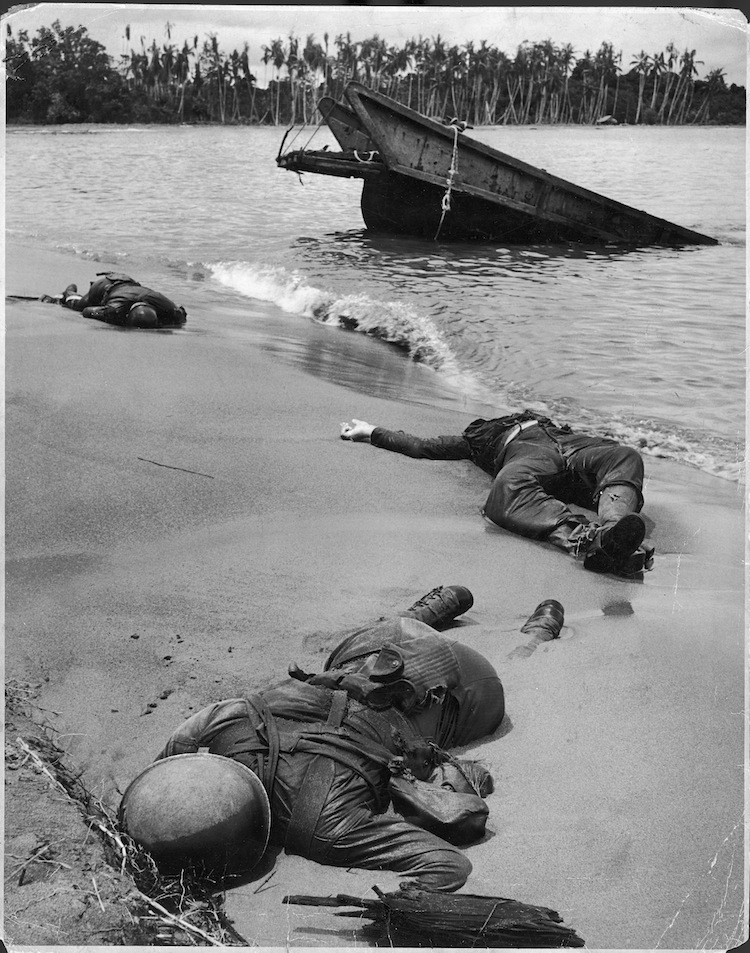A.B.C. “Cal” Whipple was Time-Life’s Battleland a decade before Battleland was born, and 70 years before this Battleland blog was created.
He did what needed to be done to bring home the horrors of war to the American people, in the pages of LIFE magazine.
How much of the reality of war should be on display to those safely back on the homefront has been a burr in democracy’s saddle forever. “What they don’t see won’t hurt them,” has long been the mantra of leaders, both military and civilian, looking to protect the sensitivities of a U.S. public that doesn’t need such protection.
On the final day of 1942, LIFE photographer George Strock made this picture showing three U.S. troops killed at New Guinea’s Buna Beach.
The obituary in Tuesday’s New York Times explained what happened next:
The military censors refused Life’s request to publish the photo, as they refused to allow any pictures of American soldiers killed in combat. At the time, Mr. Whipple was a 25-year-old Washington correspondent for Life, assigned to the newly completed Pentagon. (He had failed his physical examination for military duty.) Important as his magazine job may have sounded, Mr. Whipple recalled in a 1986 oral history for the Time Inc. archives that it “consisted chiefly of getting photographers cleared to go wherever we wanted them to go” and, “more importantly, getting their pictures cleared when they brought them back.” He added, “I had to go over to the Pentagon and really beat on the censors.”
Mr. Whipple and his colleagues at Life believed that Mr. Strock’s photograph would provide a badly needed dose of reality for those on the home front who were growing complacent about the war effort. “I went from Army captain to major to colonel to general,” he recalled in a memoir written for his family, “until I wound up in the office of an assistant secretary of the Air Corps, who decided, ‘This has to go to the White House.’ ” In September 1943, President Franklin D. Roosevelt, the War Department and the director of the Office of War Information, Elmer Davis, decided — in the words of a Life editorial on Sept. 20 — “that the American people ought to be able to see their own boys as they fall in battle; to come directly and without words into the presence of their own dead.” Opposite the editorial, Mr. Strock’s photograph took up a full page of the magazine.
Thanks for reminding the Pentagon for whom it works, Mr. Whipple. Godspeed.



